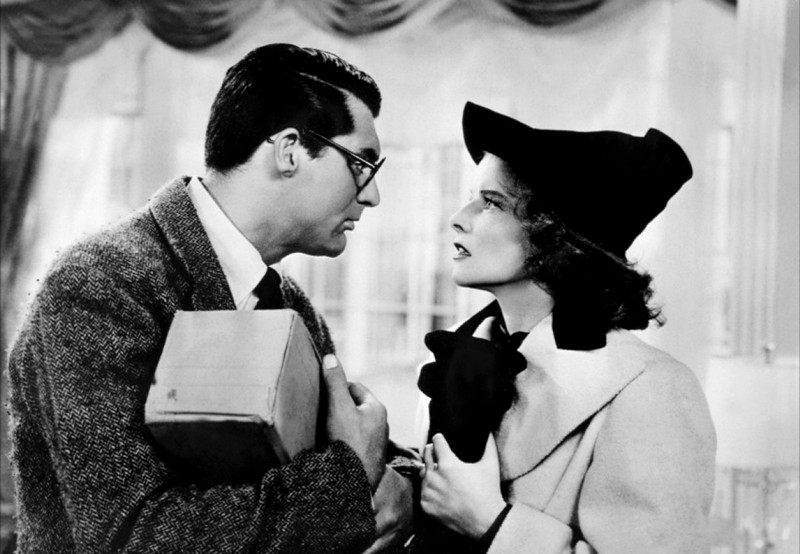
On the heels of the Great Depression, American audiences were badly in need of a distraction. They looked to the entertainment industry and Hollywood came to the cinematic rescue. In trying to offer a respite from the downtrodden state of the country, a slew of comedies were unleashed on the public.
From the 1930’s through the 40’s (and a few outliers which came even later) Hollywood perfected the Screwball Comedy, a heightened subgenre featuring outrages storylines, physical humor and farcical situations. The much-needed laughter was eagerly received and filmgoers kept coming back for more.
This Golden Age of Screwball is jam packed with wonderful films and this list features just some of the many worthy titles of the time. Actors like Cary Grant and directors such as Preston Sturges will show up more than once as they contributed a vast amount to the genre. Here is a look back at the laughs, pratfalls and general merriment of a truly remarkable period in American film.
1. Bombshell (1933)
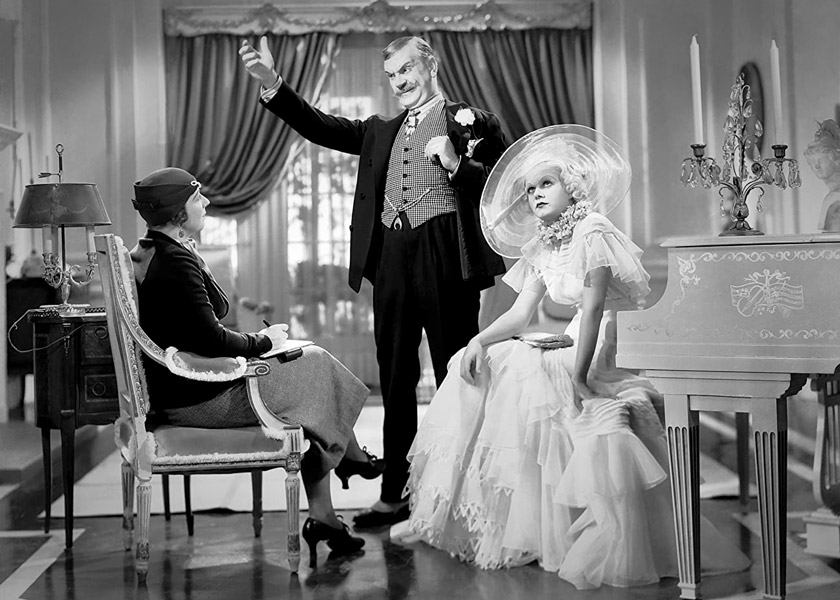
Jean Harlow’s screen career only lasted nine years but in that relatively short span she became one of Hollywood’s biggest names. Following her untimely death at the age of 26, her status as an iconic symbol of Hollywood’s Golden Age was swiftly secured. Her “Platinum Blonde” image and persona were often the focus of Harlow’s film characters and her famous screen presence is on full, sparkling display in Bombshell.
Harlow is Lola Burns, a popular Hollywood star exasperated by the people around her. Dealing with gold digging family members and a love struck studio publicist bent on scandalizing her image, the starlet decides to quit the business altogether. Upon falling for a wealthy Bostonian who is unaware of her stardom, Lola’s life takes hilarious and unexpected turns where all might not be as it seems.
Harlow carries the film with unbridled confidence and her male co-stars, Tone and Tracy, are a delightful match. It’s a fast moving, crackling farce that pokes pointed fun at the Hollywood studio system while offering audiences a bawdy good time. Meta before meta was a thing, Bombshell one of the pre-code comedies which got the ball rolling on what would become the heyday of cinema slapstick.
2. It Happened One Night (1934)
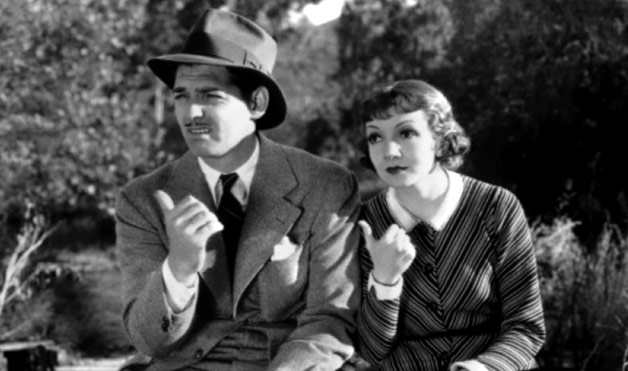
With a lack of faith from studio and the two leads reluctantly taking part in it, It Happened One Night surprised everyone becoming a critical and financial success upon its release. The film was the first of only three movies to sweep all the major Oscar categories, a most impressive feat for any production but especially a comedy.
Spoiled heiress Ellie Andrews (Claudette Colbert) impulsively marries the cunning King Westley. After being whisked away by her disapproving father, Ellie jumps ship and begins a cross-country trek to reunite with her husband. While on a bus, she meets intrepid reporter Peter Warne (Clark Gable) and reluctantly accepts his help in getting back to her husband in exchange for an exclusive story. Through their journey, they begin to fall in love but not without some very funny misadventures along the way.
Gable and Colbert’s sparkling chemistry combined with Frank Capra’s effectively light touch establish a perfect marriage between slapstick and romance. It is a battle of the sexes, playing out with equal doses of exuberant charm and quick-witted feistiness. Over 85 years after its release, It Happened One Night is still one of the quintessential romantic comedies of our time.
3. My Man Godfrey (1936)
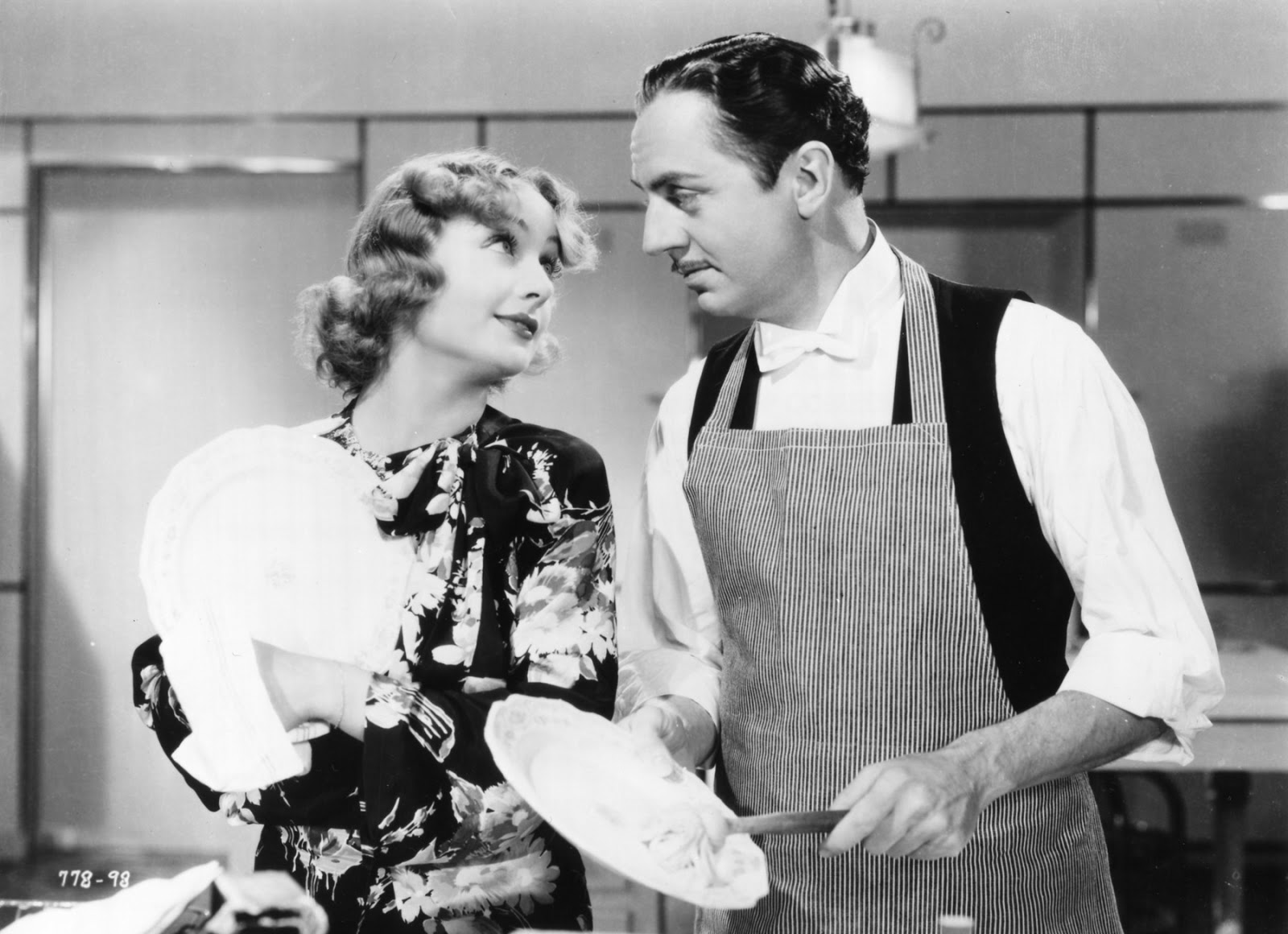
In the thick of The Great Depression, the disjunction between the classes in America was an evident aspect of the social climate. Some film studios addressed the issue straight on, releasing somber dramas detailing the struggles of the time. However, others, committed to providing escapist entertainment, chose to reference the issue within the confines of humor. My Man Godfrey is a shining example of this.
Assigned to find a “forgotten man” as part of a scavenger hunt, a wealthy socialite (Carole Lombard) finds the homeless Godfrey Smith (William Powell) at the local dump. She not only brings him home as a prize but also hires him as the family’s butler. Godfrey excels at his job, keeping life leveled for the otherwise eccentric clan. But could there be more to the mysterious Godfrey Smith than meets the eye?
In addition to being a delightful and acerbic comedy of manners, the film is also a grand showcase for its ensemble of actors. Powell is perfection as the title character and Lombard is at her luminous best. Alice Brady as the family matriarch is also a stand out as is Mischa Auer as her “protégé” Carlo. Incidentally, all four actors deservedly received Academy Award nominations for their work.
My Man Godfrey is high comedy. And though consistently hilarious, the film is also a sly social commentary veiled under a plethora of abundant chortles.
4. The Awful Truth (1937)
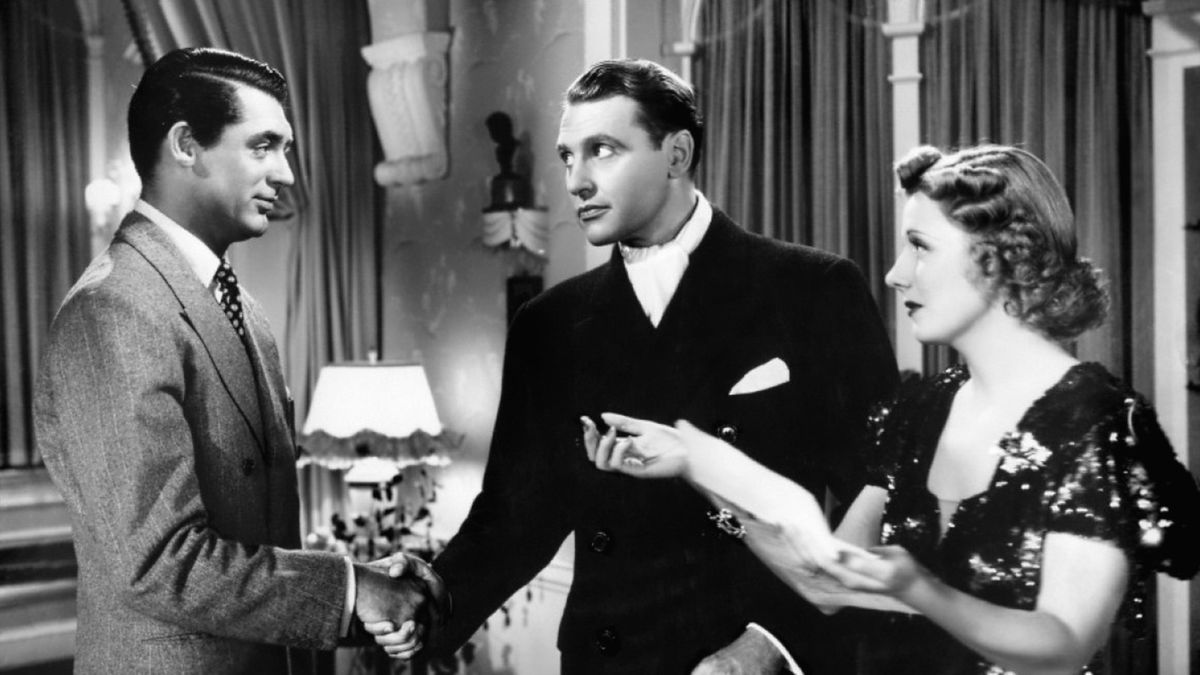
Improvisation in film has been an oft-used tool through the years but back in 1937, when filmmaking was still a very strict medium, it was almost an unheard of phenomenon. Director Leo McCarey encouraged the use of this method on the set of The Awful Truth and, though at first put off by it, the cast eventually embraced and relished in the process. The result was an instant classic, garnering McCarey a Best Director Oscar.
It’s been said that Cary Grant cemented his famous screen persona with his performance here as Jerry Wariner, half of a married couple who mutually decide to divorce after each spouse suspects the other of infidelity. Both Jerry and his soon-to-be ex-wife Lucy (Irene Dunne) quickly find new lovers but things go far from smoothly when each ex tries to sabotage the other’s attempt at romance.
Irene Dunne and Cary Grant had only been known for their more serious roles but they surprised audiences with their natural comedic abilities. They, along with Ralph Bellamy, make the transition to comedy with unbridled ease. McCarey’s decision in urging the cast to contribute improvisational ideas in shaping the film results in comedy gold. The Awful Truth’s hilarity works beautifully on its own merit but there is an added charm in knowing the collective artistic effort that went into it creating it.
5. Bringing Up Baby (1938)
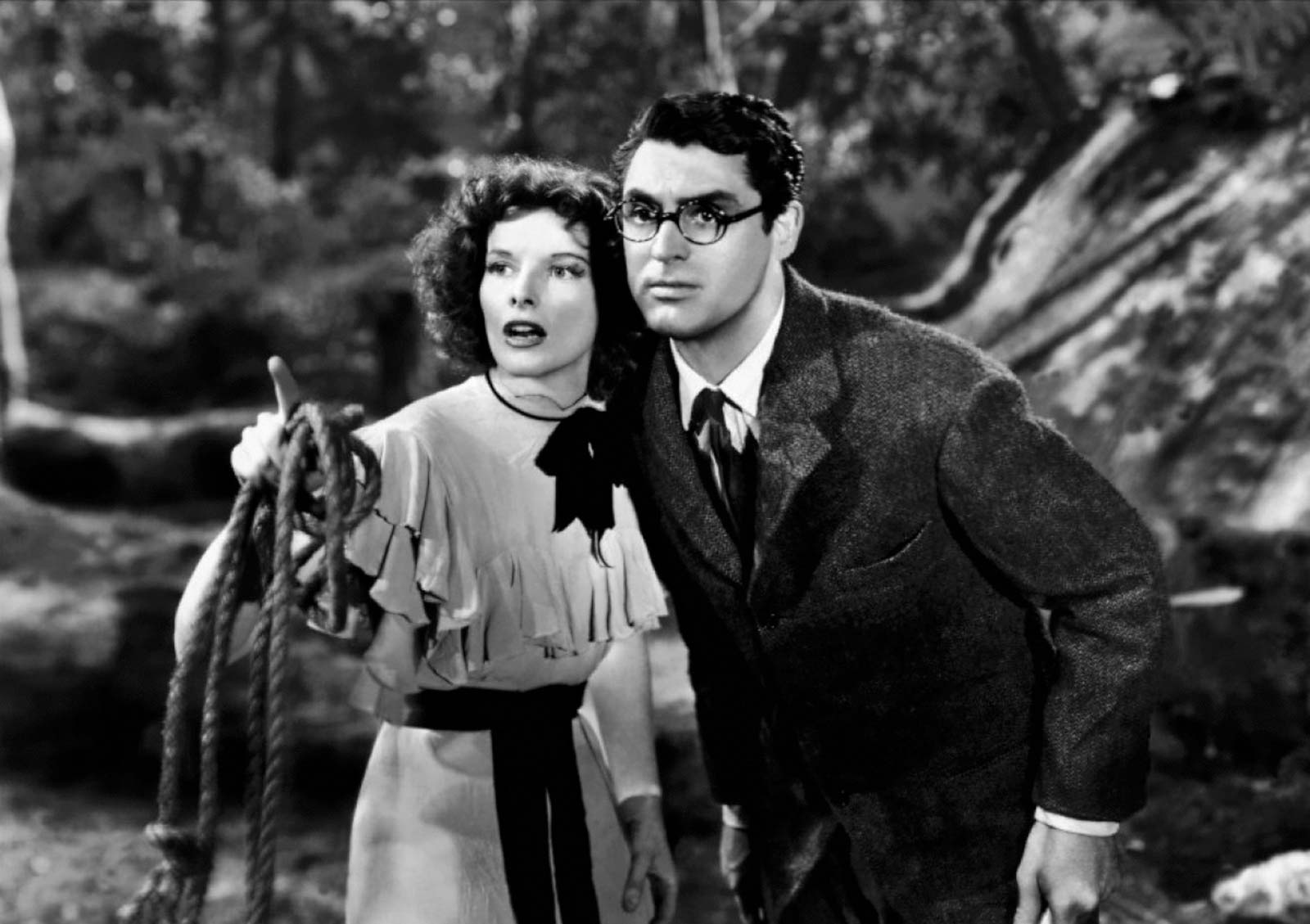
The second of four films Katherine Hepburn and Cary Grant made together, Bringing Up Baby started life as a proverbial flop. It also contributed to Hepburn being unceremoniously branded “box office poison” by film exhibitors of the time. The film, however, would eventually (and deservedly) become one of the most celebrated screwball comedies of all time and Miss Hepburn one of the silver screen’s most enduring leading ladies.
The spirited comedy finds Cary Grant as David Huxley, a soon-to-be married paleontologist on the verge of completing a dinosaur bone project. Hoping to receive a large donation for his museum from a wealthy benefactor, Huxley meets the donor’s flighty niece Susan Vance (Katherine Hepburn) who immediately sets her sights on the handsome zoologist. With a leopard named Baby in tow, the eccentric Susan wrecks hilarious havoc in David’s structured life and unexpectedly finds her way into his heart.
Hepburn and Grant are a formidable screen duo. Their dialogue and exchanges, along with their physical gags, are impeccably timed and executed (thanks in no small part to the immeasurable directorial talents of Howard Hawks). The film moves quickly, piling on the laughs almost relentlessly with nary a missed opportunity. Bringing up Baby has zany characters, a genius comic spirit and the kind of undiminished hilarity all comedies should be so lucky to have.